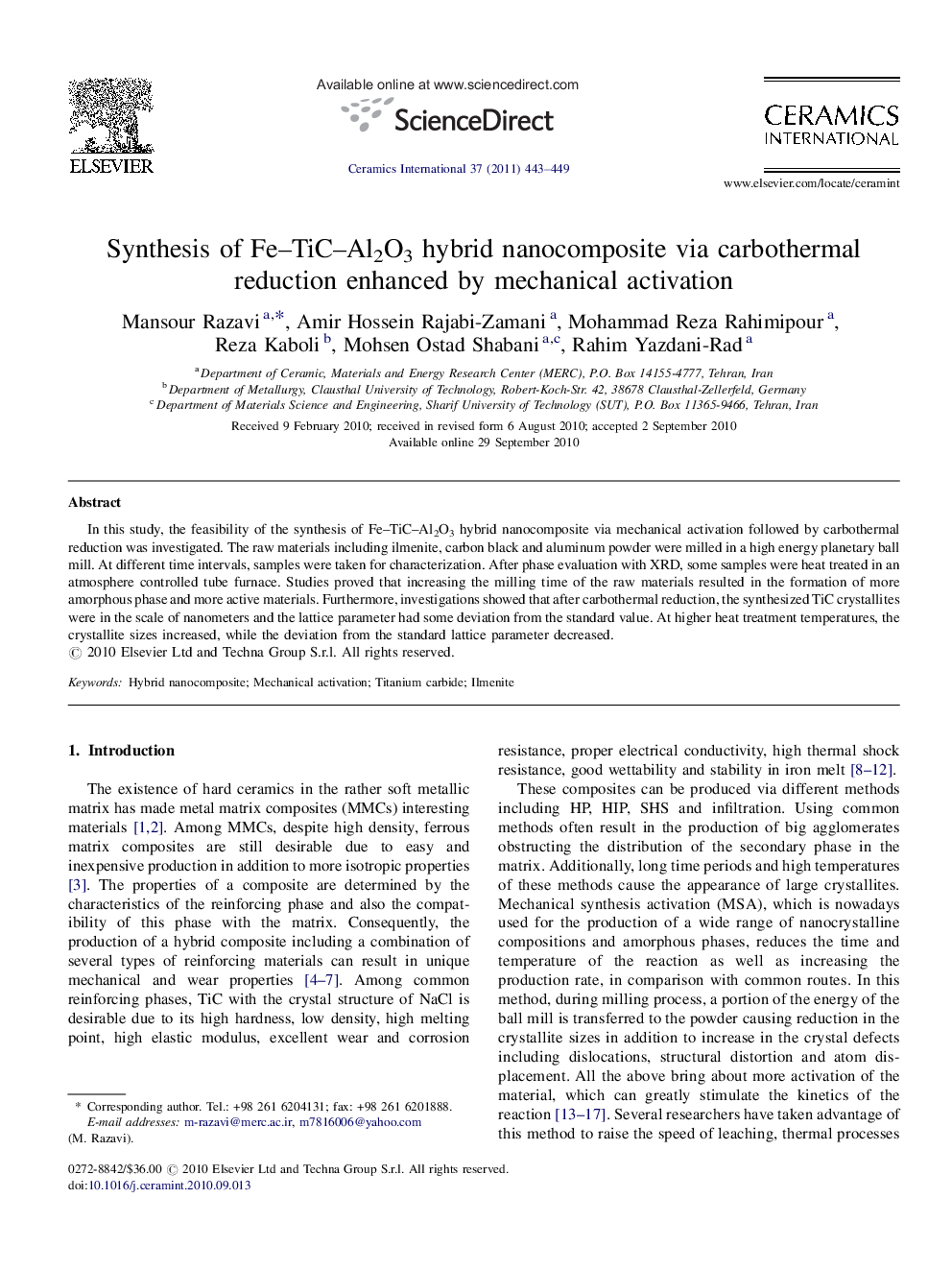| Article ID | Journal | Published Year | Pages | File Type |
|---|---|---|---|---|
| 1462574 | Ceramics International | 2011 | 7 Pages |
In this study, the feasibility of the synthesis of Fe–TiC–Al2O3 hybrid nanocomposite via mechanical activation followed by carbothermal reduction was investigated. The raw materials including ilmenite, carbon black and aluminum powder were milled in a high energy planetary ball mill. At different time intervals, samples were taken for characterization. After phase evaluation with XRD, some samples were heat treated in an atmosphere controlled tube furnace. Studies proved that increasing the milling time of the raw materials resulted in the formation of more amorphous phase and more active materials. Furthermore, investigations showed that after carbothermal reduction, the synthesized TiC crystallites were in the scale of nanometers and the lattice parameter had some deviation from the standard value. At higher heat treatment temperatures, the crystallite sizes increased, while the deviation from the standard lattice parameter decreased.
